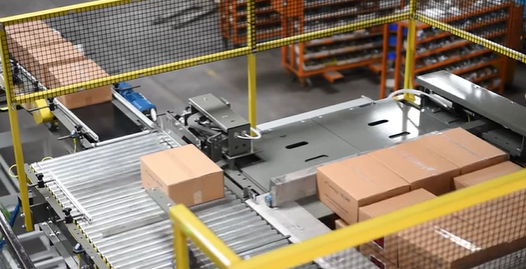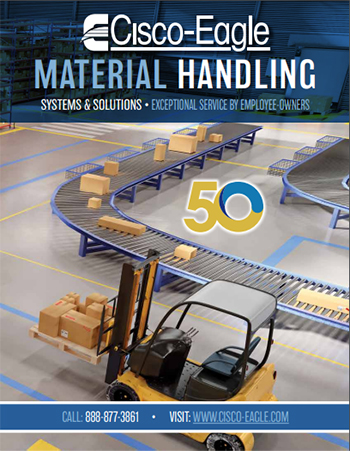How to Start Your Palletizer Project
Choosing the right palletizing technology depends on the requirements of your material handling system.

In this new age of battling labor shortages while increasing throughput, finding the right means is critical. Forward-thinking operations that turn to automated solutions are finding a balance between worker and machine. This balance leads to new heights scaled in terms of productivity and engagement.
One way to enhance an operation in this regard is by implementing palletizers. These systems offer increasing speed, safety and structure of pallet production, but when considering such a solution where should you begin?
You want to make the right choice for your facility
Your palletizer solutions can seem surprisingly simple….low-level or high-level! But within these phrases lies multiple considerations that must be reviewed before you make a decision, including robotic solutions.
Palletizer Options
Low-level – In Low-Level palletizing, cases can be fed into the machine from any height that fits your setup, even directly from the floor. The system might include an elevator plate, also known as a stripper plate, where cases are organized into a layer pattern before moving to the stripper plate.
High-level – In High-Level palletizing, a pallet is raised to stack multiple product layers. Once fully loaded, it’s lowered to a conveyor, moved to the discharge area, and replaced with a new pallet for the next round.
Robotic – Robotic palletizing machines brings many benefits compared to traditional methods. They boost efficiency as they work non-stop without needing breaks, enhance safety by cutting the risk of injuries from manual handling, and deliver consistently well-palletized loads.
Start with the right questions

To discover the right palletizer solution for your operation, you want to start by asking two important questions: “What’s my target output?” and “What pallet patterns do I prefer?”
If you have a specific number of cases and layers per minute in mind, you’re already moving in the right direction. Patterns are important, too; some pallet patterns work better with certain palletizers than others. As a rule, if your target is more than three or four layers per minute, a high-level, layer-forming palletizer might be the right choice.
Consider the type of load
Now, let’s talk about what you’re stacking. If you’re dealing with tricky containers like drums, pails, or cans that need nesting or interlocking layers, then a robotic palletizer could be your best friend. But, if your product needs a good old-fashioned squeeze (or compression, as the pros call it) after each layer, a layer-forming palletizer will give you that firm and friendly grip. Bags are a prime example of when compression is crucial, and showcase exactly why considering the “touch” and force needed to palletize is crucial.
Another thing to consider is the weight of a single layer. If it tips the scales at over 500 pounds, then a high-level palletizer is your best bet. They’re built like superheroes to handle heavy layers with ease.
The amount of lines matter
Let’s talk lines. What you’re using to feed into your palletizer makes a difference in your choices. Robotic palletizers are excellent for handling up to three or four lines at a moderate speed, making them an ideal solution to an operation with an array of lines used.
If you’ve got more than four lines moving at slower speeds, gantry and overhead systems are your ticket. They work like a charm and keep things smooth.
Don’t forget to review your space

You’ll need to make sure you’ve got enough floor space to accommodate the palletizer you’re thinking of adding. And, of course, you don’t want to forget those pesky access issues!
Measure the size of your doors and openings leading to the palletizer area. You don’t want to end up trying to squeeze a too-big palletizer through a too-small door.
With the right questions, a good grasp of your load, and a clear understanding of your space constraints, you’re well on your way to choosing the perfect palletizer for your project. But don’t forget to add these items to your checklist:
-
- Estimate Costs: Get a cost estimate to plan your investment and avoid surprises
- Set Performance Expectations: Understand what kind of performance you can expect from your new system
Read more: Automation and the cost of inaction
Now you’re armed with a checklist that gives you what to look for (and ask about) in palletizer options. Use it wisely, and find the right fit for your facility.
Download our catalog
At Cisco-Eagle, we pride ourselves on being a single source for your material handling needs with a long history of performance you can rely on. Because we also believe in empowering our customers with detailed information and options, we’re proud to offer the latest version of our company catalog.
Download the catalog today
Tags: Palletizers
Evan Fleishacker




